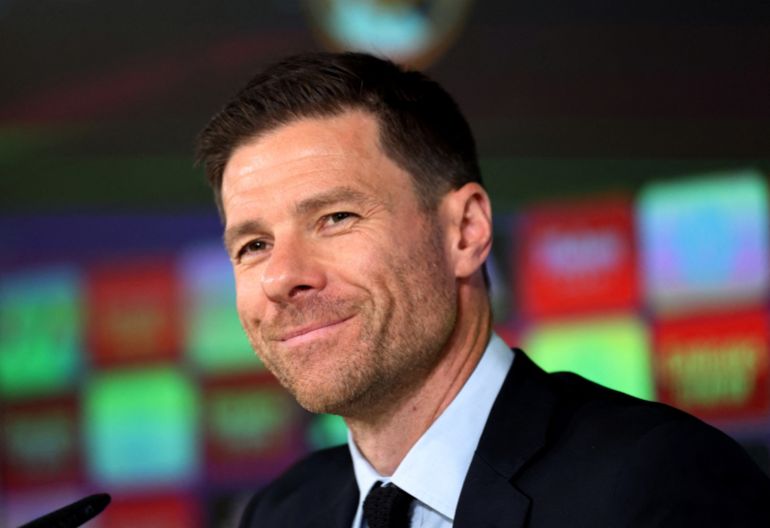Manager: Xabi Alonso
Star player: Kylian Mbappe
Club World Cup record: Five-time winners
Fixtures: Al Hilal (June 18), Pachuca (June 22), FC Salzburg (June 26)
For most teams, second place in their domestic league, runners up in both domestic cups and reaching the quarterfinals of the Champions League would mark a season of relative success.
For Real Madrid, it means it is time to change the manager.
Following two successful spells in charge of Los Blancos, a trophyless season, and not making the last four of the Champions League, marked the end for Carlo Ancelotti – the most successful manager in history.
The Italian’s boots are big ones to fill, but that is the task that former Real midfielder Xabi Alonso has taken on.
A title winner in Germany, in his first managerial job with Bayer Leverkusen, Alonso was always hot favourite to replace Ancelotti when the time came.
What is Alonso’s greatest challenge at Real?
The 43-year-old is hardly walking into a minefield in Madrid with the Spanish giants claiming a league and European double only a season ago.
Added to that squad last year was the latest Galactico, Kylian Mbappe. In the French forward, Alonso may face his biggest challenge – not due to Mbappe’s personality or work rate, but purely his position in the side.
In the words of Alonso’s predecessor, Real are unbalanced but also lack “collective commitment”.
In short, the squad had too many attackers that Ancelotti felt he had to cram onto the field, while injuries left the defence in tatters, and Madrid did not sign someone to replace midfielder Toni Kroos, who retired last year.
Veteran midfielder Luka Modric’s departure after the Club World Cup means Alonso will be losing yet more poise, technique and wisdom from the midfield.
Two seasons ago, prior to the retirement of Kroos, Real swept all before them with their then-new signing, Jude Bellingham, playing in an advanced role through the middle, flanked by Vinicius Junior and Rodrygo.

The arrival of Mbappe forced Bellingham deeper, and something of a false-nine formation was changed to a straight 4-3-3 set up. The chemistry didn’t blend easily.
Mbappe ended up as the leading scorer in La Liga, helped in some part by a late-season injury to his closest competitor, Barcelona’s Robert Lewandowski. The former PSG striker netted 43 goals across all competitions with his new club.
That did not mask the fact that the team was not as fluid as the one that glided through the previous campaign to finish 10 points clear of Barcelona. Ancelotti’s final season saw his side trail their fierce rivals from Catalonia by only four points.
Still, the conundrum of making Madrid tick again, with a side that has no choice but to pick Mbappe, Bellingham and Vinicius for all the big games, is Alonso’s great challenge – and that begins at the FIFA Club World Cup.

How important is the Club World Cup for Real Madrid?
On the eve of the final El Clasico of the season, and what would be the last of Ancelotti’s career, the Italian politely reminded everyone that Real Madrid would be competing in FIFA’s showpiece club event and not their rivals, Barcelona.
The pressure was growing on Real’s then-manager, and the speculation was mounting that his time at Santiago Bernabeu was coming to an end, potentially before the end of the season.
Real would lose the match at Barcelona 4-3, and with it any final realistic chance of retaining their La Liga title, having already seen their Champions League defence ended by Arsenal. Ancelotti was not one to be pushed quietly aside after a glittering career across Europe.
“Playing Barcelona is special,” Brazil’s new national manager said on the eve of the game. “And this will be the last El Clasico of the season, because Barca are not in the Club World Cup.”
Whatever the merits of FIFA’s Club World Cup, long term, there is little doubt that, short term, the importance off the field far outweighs the significance of the tournament on the field.





